It would be great to insulate your garage ceiling if you want to regulate the ambient temperature of your home—whether you want to feel warm or cool during a particular season.
Doing this has several benefits besides making your heating or cooling more efficient. It keeps sound out, prolongs the life of the roof, and raises your house’s value.
Read on to know more about insulating your garage ceiling. We will tackle the various materials you can use, their typical costs, and how to DIY it, among other things.
Is garage ceiling insulation essential?
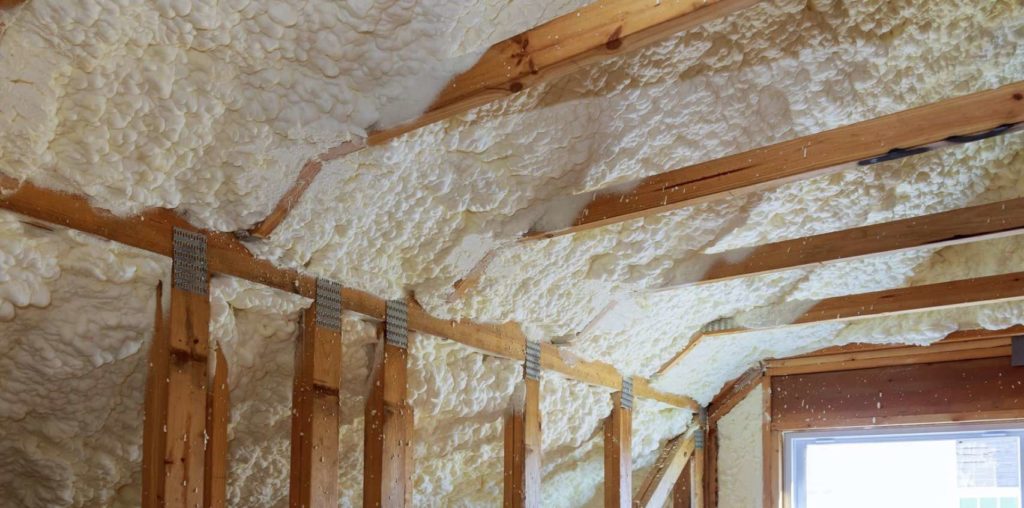
Adding insulation to your garage ceiling isn’t required. However, we recommend it, especially if your roof locks in the heat inside your garage or you have a living area above the garage.
If your roof traps heat or you have a room above your garage, it will be hotter than normal staying there.
Plus, temperature changes are also capable of cracking the drywall between the rooms of your property, necessitating expensive repairs.
By insulating your garage ceiling or other places in the house, the temperature will be regulated. It’s like a thermal or cold barrier that keeps you comfortable no matter the season.
In turn, this will lower your energy bills by the end of the month. It’s a great investment, and in fact, it’s not that expensive to insulate your garage ceiling.
What are the advantages of garage ceiling insulation?

There are several benefits of garage ceiling insulation.
1) It helps you control the temperature of the space
The garage is the least insulated place in one’s house. That means that it can get uncontrollably warm or cool, depending on the weather.
You might feel hot during sweltering summer days, uncomfortably cold in fall and winter, or somewhere in between on a fair day.
Whether you turn on the heater or the air-conditioner, the insulation on the garage ceiling will keep the room at the temperature you like.
2) It lowers your energy expenses
Since insulation shields your garage ceiling, heat or cool air can’t escape the space easily. Also, the internal temperature of your garage won’t be easily affected by the weather outside.
The result is that your HVAC appliance will use less power to match your heating or cooling demands. This will significantly lower your energy bills at month’s end.
3) It acts as a sound barrier
Shutting car doors, clanging metal parts, hammering sounds, and the like will have less of a chance to travel through the ceiling because of garage ceiling insulation.
It will prevent any sound disturbance or disruption to everyone at home, especially at night or when they’re working.
4) It extends the roof’s and upper floor’s life
Rapid temperature fluctuations can expand or shrink the drywall and wood in the garage. And moisture can lead to the development of mold and mildew spots too.
With proper insulation, you can protect these home components and make them last a great deal longer.
On the whole, your roof and the floor above the insulated garage ceiling will be in a great state. You can have confidence that they won’t be easily worn or damaged as a result.
5) It protects you from carbon monoxide poisoning
Carbon monoxide is a deadly gas that can come into your home from fireplaces, heaters, boilers, and furnaces.
It can creep into the garage area, and if its windows and doors are shut, it can poison the people in there.
Having garage ceiling insulation blocks this colorless, odorless gas from seeping into the wooden framework of your garage. Thus, it will keep you and your family safer in the house.
6) It raises your property’s value
All the above benefits combine to raise your home’s value should you decide to sell it in the future.
As we said, insulating your garage ceiling is a great investment that has a far-reaching effect throughout the house. Furthermore, you and your family will absolutely get to benefit from it.
What are the various types of garage ceiling insulation?
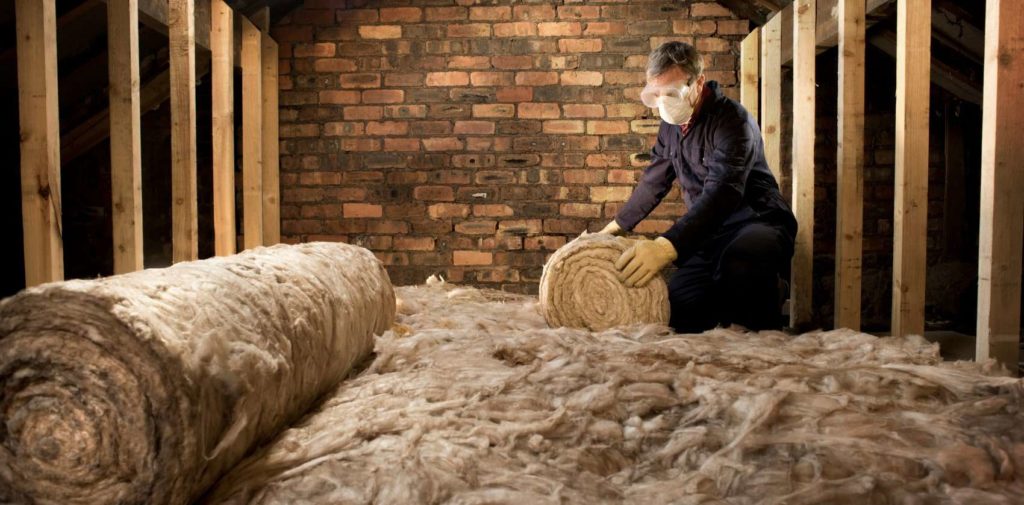
Here are the various types of garage ceiling insulation and their rates:
1) Fiberglass Insulation
You can expect to pay between $500 and $1,600 for every 1,000 square feet you insulate with fiberglass. Each 28 1/2 pound bag of fiberglass costs $33.
Fiberglass insulation is affordable and easy to install within garage walls and ceilings. The material is plastic that’s reinforced with glass fibers called fiberglass.
It consists of batt or blanket rolls and will be placed between the wall studs and ceiling joists of the garage.
According to Forbes, fiberglass insulation can reduce heating and cooling expenses by 40 or 50 percent as well as noises coming from the place.
2) Rigid Foam Insulation
Rigid foam insulation costs $0.25 to $1.40 per square foot of board foam installed.
This is another simple-to-install garage ceiling insulation. Rigid foam insulation typically uses 4 x 8-foot polystyrene foam panels.
Polystyrene is a material that’s similar to styrofoam which helps to block out ambient heat and cold.
Installing rigid foam will involve using a staple or glue gun to put it in place. Its drawback is that it costs a tad more expensive than the fiberglass counterpart.
3) Blow-In or Cellulose Insulation
Cellulose insulation is more expensive compared to fiberglass. It costs $1.20 per square foot.
It consists of fibrous and recycled materials (like newspaper or cardboard) resembling feathers from a pillow.
Also, it’s treated with fire-resistant material to strengthen the house’s safety and durability. In addition, it prevents quick damage and pest infestation to the structure it is used on.
What’s great about it is it can be machine-blown to fit into small cracks and crevices on the garage ceiling that rigid foam or fiberglass insulation can’t otherwise reach.
How do I insulate my garage ceiling?
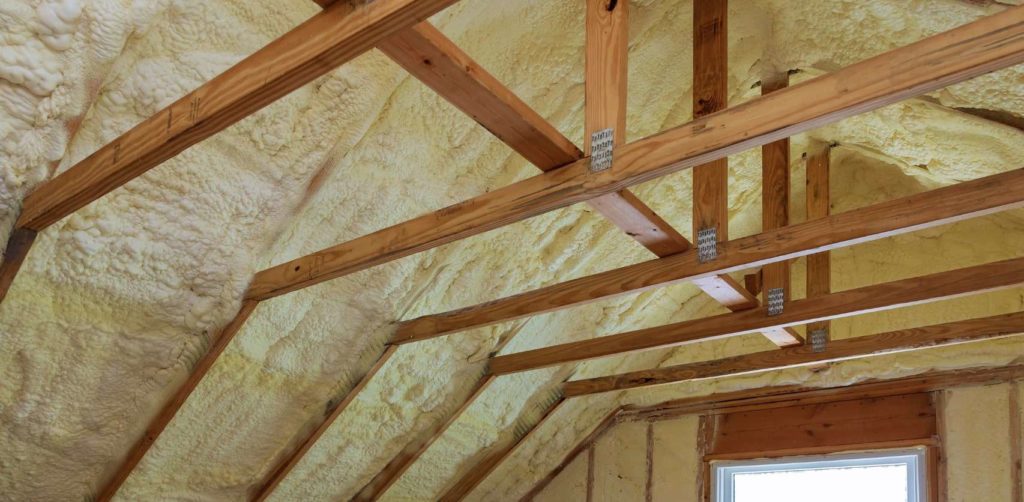
Follow the steps outlined below to insulate your garage ceiling with fiberglass:
- Declutter your garage
Move aside all of the things in the way, including furniture, racks, and your belongings.
Fiberglass can easily enter any space and thing. It can damage them or give you more cleaning to do when the installation is complete.
- Locate all breaker boxes
Breaker boxes or electrical boxes encase wiring and other electrical parts. Being high-voltage, they are risky and unsafe to work near.
Just make sure there’s ample space around the breaker box so nothing will be caught in fire or shock beside it.
- Staple the vapor barrier into place
The next step is to staple the vapor barrier into place. Its purpose is to keep moisture at bay.
Otherwise, fungal spots and spores will appear, which will weaken the building’s components and cause allergies to people and pets.
- Install the ceiling insulation
Install the batt foam snugly in the walls and ceilings. Overlap it along two sections, but if this isn’t possible, adjust it closer to the next section.
Using spray foam should be done very carefully to leave no gaps and spaces. If not, the cold or warm air from outside can seep through them.
- Return the ceiling panels
Finally, return the ceiling panels where you took them. And that’s about it for insulating your garage ceiling!
Should I hire a professional for garage ceiling insulation?
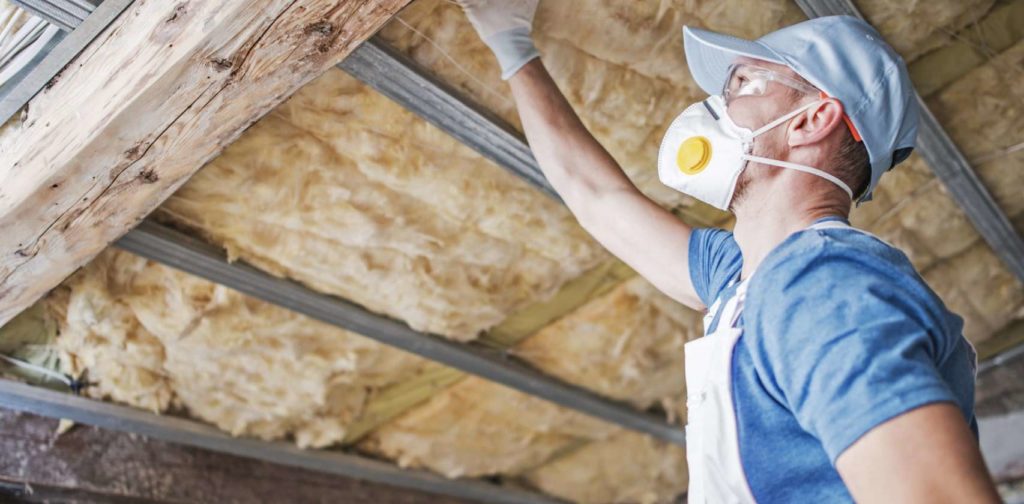
It’s always a great idea to call a professional to install garage ceiling insulation. Often, people don’t know what is behind the ceiling.
There may be plumbing or electrical wiring that can be dangerous to touch or work with since they can cause injuries or electrocution.
But a licensed insulation expert can handle all these things for you to install ceiling insulation. You don’t even have to worry about learning how to use spray foam correctly.
Although you’ll need to pay them a certain price, you will have confidence that the work performed is top-notch, safe, and up to modern building codes.
How much do I have to pay for insulation installation?
In general, homeowners pay $1 to $3.89 per square foot to install insulation material on the garage ceiling.
However, the costs will differ according to the type of insulation, insulation ability (called R-value), and labor.
By the way, the labor typically costs $0.40 per square foot more or less. Of course, the more difficult the work, the higher it’ll be.
FAQs about Garage Ceiling Insulation
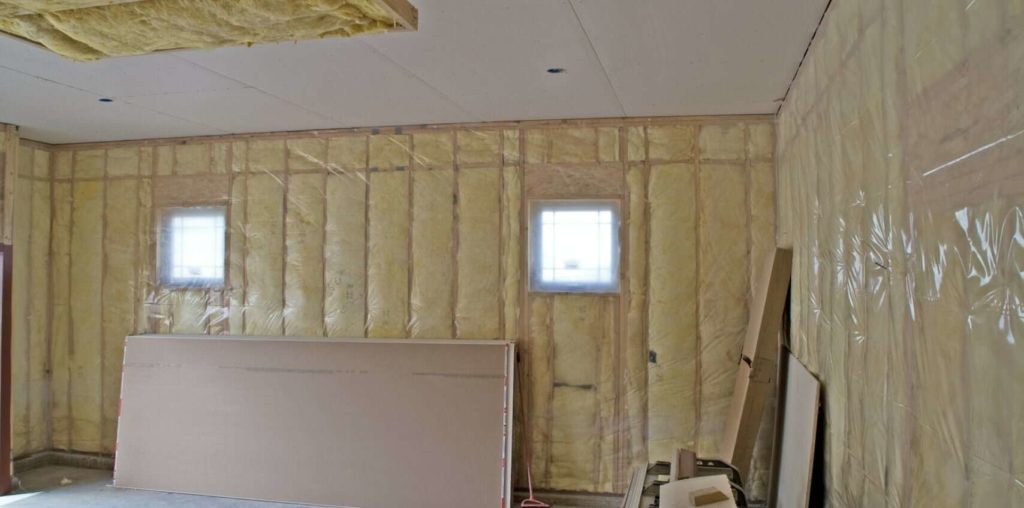
- What is the best garage ceiling insulation material?
Fiberglass is the best and most popular type of garage ceiling insulation given its effectiveness, mid-tier costs, and ease of installation.
Once installed, it will make the garage warmer or cooler as you need with the help of an AC or heater. The insulation should trap heat or cool air in the space.
Fiberglass comes in pre-cut batts and long blankets that you can fit snugly between the ceiling joists and wall studs. So these aren’t very cumbersome and rigid, unlike the other types.
- Is it better to insulate the ceiling or the roof?
It’s advisable to insulate the garage ceiling first because heat or air directly comes into the space through it and it’s easier to install insulation on the structure.
On the other hand, insulating the roof takes a lot more work and can be more complex to do. Plus, doing so isn’t urgent, as most people don’t stay or sleep in the attic.
- When must I install garage ceiling insulation?
Because insulating the garage ceiling takes some work, it’s best to be done in the right weather. We mean it shouldn’t be too hot, rainy, or stormy.
This weather is ideally during the autumn season. Insulating your home at this time prepares you for the chilly and snowy weather in the winter.




